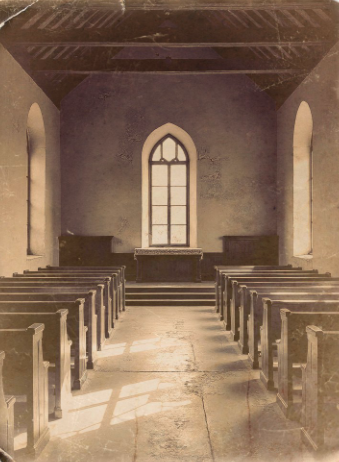From its inception as a mining boomtown in the late 19th century, Cripple Creek, Colorado, has been a melting pot of cultures and beliefs. The town’s rapid growth during the gold rush era attracted a diverse population, each bringing their own faith traditions. This article delves into the rich tapestry of religious denominations and faiths that have shaped Cripple Creek from the 1880s to modern times, highlighting their historical significance and evolution.
The Gold Rush Era: Foundations of Faith in Cripple Creek (1890s)
The discovery of gold by rancher Bob Womack in 1890 transformed Cripple Creek into a bustling hub almost overnight. With the population surging to over 10,000 by the mid-1890s, the need for spiritual guidance and community became paramount. Various religious groups established congregations to serve the spiritual and social needs of miners and their families.
Catholic Church
- St. Peter’s Catholic Church:
- Established: 1892
- Background: Founded to serve the substantial number of Irish and other Catholic immigrants drawn to the mining opportunities.
- Architecture: The church’s Gothic Revival style became a notable feature in the town’s skyline.
Baptist Church
- First Baptist Church of Cripple Creek:
- Established: Mid-1890s
- Community Role: Provided not only religious services but also educational programs and social support for families.
Episcopal Church
- St. Andrew’s Episcopal Church:
- Established: 1893
- Significance: Methodism appealed to many miners due to its emphasis on personal faith and community support.
- Historical Landmark: The original Methodist church building, constructed in the early 1890s, became a central location for community gatherings.
Early 20th Century: Growth and Challenges (1900s – 1930s)
As the gold reserves dwindled, Cripple Creek faced economic challenges. However, the faith communities remained pillars of support.
Consolidation of Congregations
- Economic Impact: Decreased population led to some denominations consolidating resources.
- Shared Facilities: Some churches began sharing buildings to reduce costs while maintaining services.
Introduction of New Denominations
- Lutheran Church:
- Arrival: Early 1910s
- Reason: German immigrants brought their traditions, leading to the establishment of a Lutheran congregation.
- Pentecostal Movement:
- Emergence: 1920s
- Influence: The charismatic movement gained followers seeking a more expressive form of worship.
Mid-20th Century: Stability and Community Engagement (1940s – 1970s)
Post-World War II brought stability and a renewed sense of community.
Revival of Faith Based Activities in Cripple Creek
- Youth Programs: Churches began focusing on youth engagement through camps and educational programs.
- Ecumenical Efforts: Different denominations collaborated on community projects and interfaith services.
Growth of Non-Christian Faiths
- Jewish Community Presence: Small but significant, with families settling in the area and contributing to local businesses.
- Eastern Religions: Influences of Buddhism and Hinduism began to appear subtly through literature and personal practice, though formal congregations were not established during this period.
Late 20th Century to Modern Times: Diversity and Adaptation (1980s – Present)
The latter part of the 20th century saw diversification in both population and religious practice.
Expansion of Denominations
- Non-Denominational Churches:
- Emergence: 1990s
- Characteristics: Focused on community service, contemporary worship styles, and less formal doctrines.
- Evangelical Congregations:
- Growth: Increased in numbers due to regional and national trends emphasizing evangelical Christianity.
Introduction of New Faith Communities In Cripple Creek
- Latter-day Saints (Mormon) Presence:
- Establishment: Small groups formed meeting houses in nearby areas, serving members in Cripple Creek.
- Jehovah’s Witnesses:
- Kingdom Hall: Established to cater to adherents seeking an alternative to mainstream Christianity.
Modern Trends
- Interfaith Dialogue:
- Initiatives: Churches and faith groups participate in interfaith councils to address social issues.
- Cultural Integration:
- Hispanic Ministries: Reflecting demographic changes, some churches offer services in Spanish.
- Decline in Traditional Attendance:
- Challenge: Like many rural towns, Cripple Creek faces declining church attendance, prompting congregations to adapt through community outreach and modernization of services.
Graphical Representation of Denominational Presence Over Time
To illustrate the evolution of religious denominations in Cripple Creek, the following table provides a summary that can be used to create a graph or chart in WordPress:
Table: Number of Established Congregations by Denomination in Cripple Creek (Selected Years)
| Denomination | 1895 | 1925 | 1955 | 1985 | 2015 |
|---|---|---|---|---|---|
| Methodist | 1 | 1 | 1 | 1 | 1 |
| Catholic | 1 | 1 | 1 | 1 | 1 |
| Baptist | 1 | 1 | 1 | 2 | 2 |
| Episcopal | 1 | 1 | 1 | 1 | 1 |
| Lutheran | 0 | 1 | 1 | 1 | 1 |
| Pentecostal | 0 | 1 | 1 | 2 | 2 |
| Non-Denominational | 0 | 0 | 0 | 1 | 2 |
| Latter-day Saints | 0 | 0 | 0 | 1* | 1* |
| Jehovah’s Witnesses | 0 | 0 | 0 | 1 | 1 |
| Jewish | 0 | 0 | 0 | 0 | 0 |
| Other Faiths | 0 | 0 | 0 | 0 | 1 |

* Note: Latter-day Saints congregations were established in nearby areas serving Cripple Creek residents.
Interpreting the Data of faith in Cripple Creek
The table showcases the fluctuation and growth of various denominations over time:
- Stability of Traditional Denominations: Methodist, Catholic, Baptist, and Episcopal churches have maintained a continuous presence since the 1890s.
- Emergence of New Denominations: The introduction of Lutheran and Pentecostal congregations reflects immigration patterns and evolving religious preferences.
- Growth of Non-Denominational Churches: Recent decades show a rise in non-denominational congregations, catering to contemporary worship trends.
- Limited Presence of Non-Christian Faiths: While non-Christian faiths have a minimal formal presence, their cultural impact has grown through individual practices and interfaith initiatives.
Impact on Community and Culture
The diverse faith landscape of Cripple Creek has significantly influenced its cultural and social development:
- Education and Social Services: Churches have historically provided educational programs, charitable activities, and social support systems.
- Architectural Heritage: Religious buildings contribute to the town’s historical aesthetics, with several churches recognized as historic landmarks.
- Community Cohesion: Faith communities have played a pivotal role in uniting residents, especially during economic downturns and social challenges.
- Cultural Festivals: Religious holidays and events often become communal celebrations, enhancing cultural richness and tourism appeal.
Modern-Day Challenges and Adaptations
Contemporary issues facing faith communities in Cripple Creek include:
- Demographic Changes: Shifts in population size and composition affect congregation sizes and resources.
- Secularization Trends: A national move towards secularism challenges traditional models of worship and community engagement.
- Economic Factors: Funding and maintaining historical church buildings require innovative solutions, such as community fundraising and heritage grants.
Adaptations:
- Technological Integration: Some churches have adopted online services and social media outreach to connect with younger generations.
- Community Services Expansion: Faith groups are increasingly involved in social justice initiatives, food banks, and support for vulnerable populations.
- Interfaith Collaboration: Collaborative efforts aim to address broader community issues beyond individual doctrines.




